What to do in Nara
Nara is located south-east of Kyoto and was the capital of Japan. It is home to important temples and a huge park in which thousands of deer roam undisturbed.
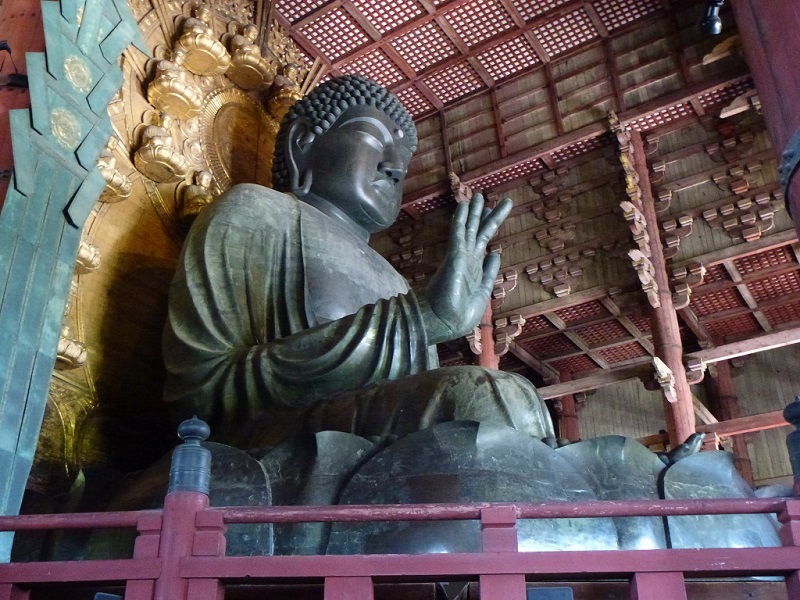
Photo by Japanforeveryone.com
The Todaiji Temple in Nara is one of Japan’s most famous attractions. Built in the 8th century, it is known to be one of the largest wooden structures in the world and contains the giant statue of Buddha Vairocana inside. Todaiji is an icon of Japanese history and culture and an important religious centre for Buddhists. Besides the Buddha, the temple also houses other sacred sculptures and national treasures. Due to its grandeur and thousand-year history, Todaiji Temple is a must-see for visitors wishing to immerse themselves in the ancient Buddhist tradition of Nara.
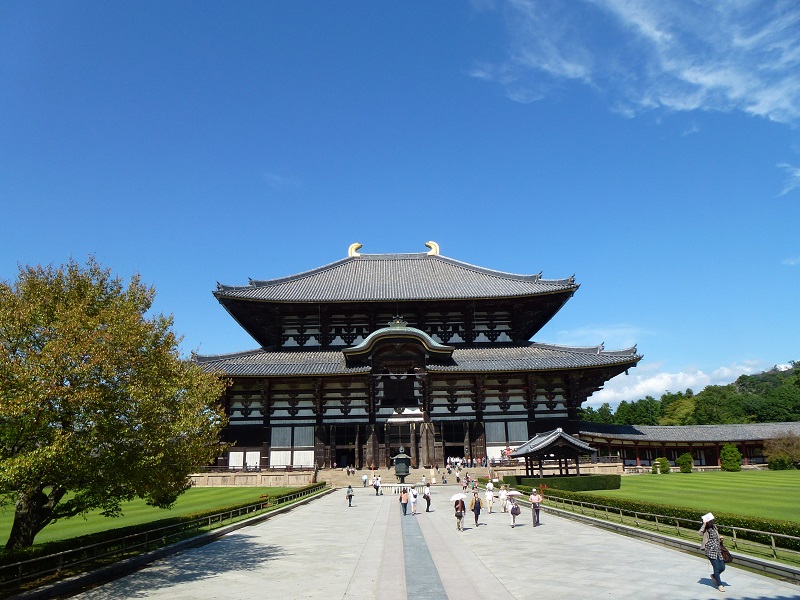
Photo by Japanforeveryone.com
Practical information
| View location on Google Maps | |
| Official website |
|
| Daibutsuden Hall | |
| 8:00-17:00 (November to March) 7:30-17:30 (April to October) |
|
| No closing days | |
| 600 Yen | |
| Todaiji Museum | |
| 9:30 until Daibutsuden Hall closes Last admission 30 minutes before closing |
|
| Between the setting up of the various exhibitions | |
| 600 Yen (museum only) 1000 Yen (museum and Daibutsuden Hall) |
|
| 30 minutes’ walk east from JR Nara Station 20 minutes’ walk east from Kintetsu Nara Station |
The Horyuji Temple in Nara is one of the oldest Buddhist temples in Japan. Built in the 7th century, it is a UNESCO World Heritage site and an important example of traditional Buddhist architecture. The temple is famous for its five-storey pagoda, which is the oldest wooden structure in the world. Inside the temple complex are also some national treasures, such as sacred statues and ancient paintings. The Horyuji Temple is a place of great historical and spiritual importance, rich in beauty and serene atmosphere.
663highland, CC BY-SA 3.0, via Wikimedia Commons
Practical information
| View location on Google Maps | |
| Official website |
|
| 8:00-17:00 (until 16:30 from 4 November to 21 February) | |
| No closing days | |
| 1500 Yen 750 Yen (children up to 11 years) |
|
| From JR Nara station take the train to Osaka on the Yamatoji Line and get off at Horyuji (12 minutes – 220 yen, included in Japan Rail Pass). From Horyuji station walk north for 20 minutes From JR or Kintetsu station in Nara take bus number 98 to Horyuji-mae. (1 hour, 770 Yen). The bus back to Nara is number 97 |
The Isuien Garden in Nara is a beautiful Japanese park offering breathtaking panoramic views of the surrounding mountains. The garden comprises two parts: the upper part with an estanque, vaguely reminiscent of the Japanese ideal of Lake Biwa, and the lower part, which is dominated by the view of Todaiji Temple. The Isuien Garden is well known for its refined natural beauty and serene atmosphere, making it a popular attraction for tourists and locals alike.
NEAULT, CC BY-SA 4.0, via Wikimedia Commons
Practical information
| View location on Google Maps | |
| Official website |
|
| 9:30-16:30 (until 17:00 in April and May) Last admission 30 minutes before closing |
|
| Tuesday (next day if Tuesday is a national holiday) From 28 December to 15 January and from 21 to 28 September for maintenance (full calendar) |
|
| 1200 Yen | |
| The garden is located southwest of Todaiji Temple 15 minutes’ walk east from Kintetsu Nara Station 25 minutes’ walk east from JR Nara Station |
Nara Park in Nara is an immense green area located in the central part of the city, home to numerous historical and natural monuments. It is home to a large population of deer that roam freely in the park’s meadows and paths. Among the park’s main attractions are Todaiji Temple, Kasuga Temple and Isuien Garden. Nara Park is one of the most visited places in the city, thanks to its natural and cultural beauty, and is a must for any tourist wishing to discover the historical and natural heritage of the region.
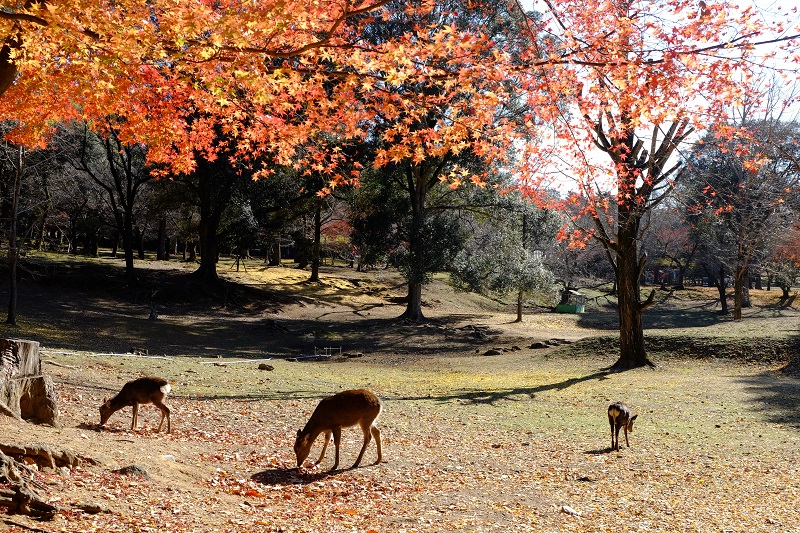
Photo by Japanforeveryone.com
Practical information
| View location on Google Maps | |
| 20 minutes’ walk east of Kintetsu Nara Station 30 minutes’ walk east of JR Nara Station |
The Kasuga Taisha Shrine in Nara is one of Japan’s most fascinating cultural treasures. Founded in 768, the shrine is renowned for its wooded paths covered with thousands of stone lanterns, which are lit during important festivals and ceremonies. The shrine’s buildings are embellished with a unique vermilion dye, while the interiors hold artwork and ancient artefacts. The Kasuga Taisha Shrine is a sacred place that attracts visitors with its beauty and mystical atmosphere, offering an unforgettable experience of spirituality and history.
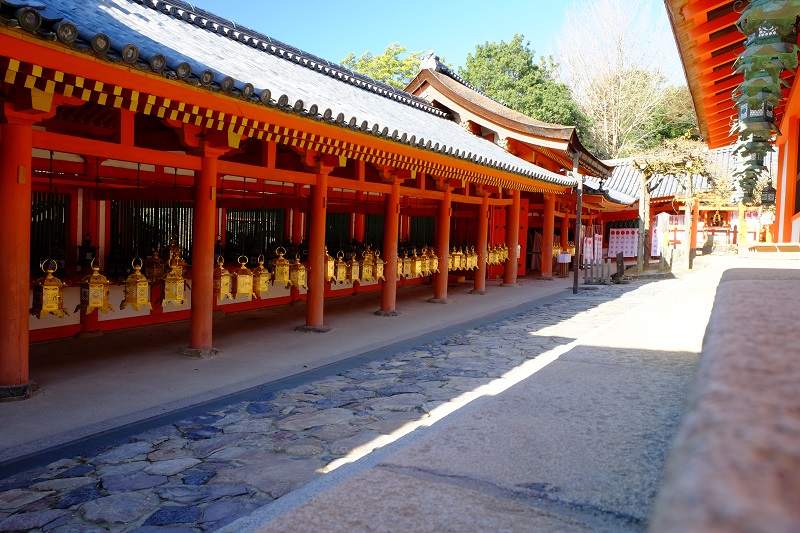
Photo by Japanforeveryone.com
Practical information
| View location on Google Maps | |
| Official website |
|
| Kasuga Taisha | |
| 6:00-18:00 (April to September) 6:30-17:00 (October to March) 9:00-16:00 (internal area) |
|
| No closing days (the interior area is closed occasionally) | |
| Free (outdoor area) 500 Yen (indoor area) |
|
| Botanical Garden | |
| 9:00-17:00 (until 16:30 from December to February) Last admission 30 minutes before closing |
|
| Mondays from December to February (or the following day if Monday is a national holiday) | |
| 500 Yen | |
| Museum Kasuga Taisha | |
| 10:00-17:00 Last entry 30 minutes before closing time |
|
| Irregular closures between exhibitions | |
| 500 Yen | |
| The Kasuga Taisha is located in the eastern part of Nara Park 30 minutes’ walk east of Kintetsu Nara Station 40 minutes’ walk east of JR Nara Station |
The Shin-Yakushiji Temple in Nara is one of the city’s important tourist attractions. Built in 747, the temple is famous for its unique architecture and Heian-era frescoes. The temple is dedicated to Yakushi Nyorai, the Medicine Buddha, and also houses a statue of Miroku Bosatsu, the Buddha of the future. The temple complex comprises several buildings and extends into a large surrounding forest area. The Shin-Yakushiji Temple is a place of meditation and contemplation, offering visitors a spiritual experience to complete their visit to Nara.
663highland, CC BY-SA 3.0, via Wikimedia Commons
Practical information
| View location on Google Maps | |
| Official website |
|
| 9:00-17:00 | |
| No closing days | |
| 600 Yen | |
| The Shin-Yakushiji is located south of Nara Park 30 minutes’ walk south-east from Kintetsu Nara Station 40 minutes’ walk east from JR Nara Station |
The Kofukuji Temple in Nara is an ancient Buddhist complex founded back in 710. The temple houses numerous structures, including a five-storey pagoda 50 metres high, dating back to the Edo period. Kofukuji is an important Japanese historical and cultural site with many ancient statues and national treasures. The temple is also a popular place to practise meditation and participate in traditional cultural activities, such as martial arts demonstrations and tea ceremonies. Kofukuji Temple is a must-see experience for lovers of Japanese history and culture.
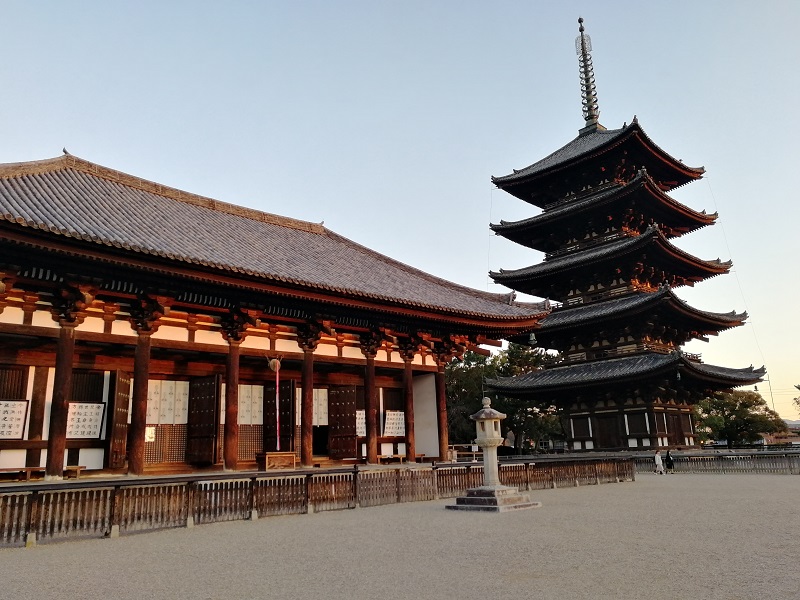
Photo by Japanforeveryone.com
Practical information
| View location on Google Maps | |
| Official website |
|
| 9:00-17:00 Last admission 15 minutes before closing The park around the temple is always open |
|
| No closing days | |
| 500 Yen (Central Golden Hall) 700 Yen (National Treasure Hall) 300 Yen (Eastern Golden Hall) 900 Yen (National Treasure Hall and Eastern Golden Hall) |
|
| 5 minutes’ walk east of Kintetsu Nara Station 20 minutes’ walk east of JR Nara Station |
The Nara National Museum is one of Japan’s leading museums, dedicated to preserving and displaying the country’s art and culture. Located in the city of Nara, the museum houses a vast collection of historical and artistic artefacts, including paintings, sculptures, artefacts and ancient manuscripts. Among its most famous works are Buddha statues and precious carved wooden tablets. The Nara National Museum offers visitors an incredible insight into the history of Japan and its rich artistic heritage, making it a must-see attraction for art and culture lovers.
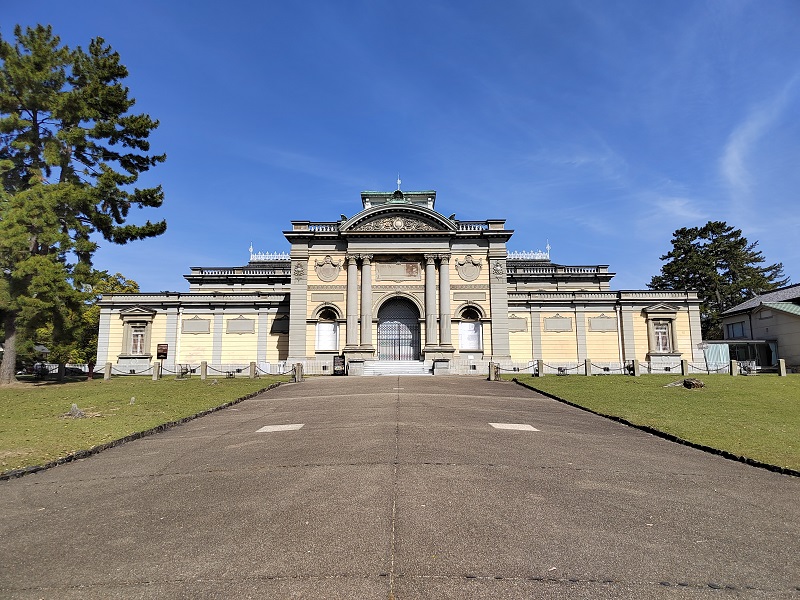
Photo by Japanforeveryone.com
Practical information
| View location on Google Maps | |
| Official website |
|
| 9:30-17:00 (until 20:00 on Fridays and Saturdays and other predefined days – see official website) Last entry 30 minutes before closing time |
|
| Monday (or the following day if Monday is a national holiday) | |
| 700 Yen (includes entrance to both wings of the museum) 600 Yen on Fridays, Saturdays and extended opening hours if you enter after 5pm Free on certain days of the year (see official website) |
|
| The museum is located in the western part of Nara Park 15 minutes’ walk east of Kintetsu Nara Station 25 minutes’ walk east of JR Nara Station |
The Toshodaiji Temple in Nara is an important Buddhist centre founded in 759 by Ganjin, an influential Buddhist monk of the Nara period. The temple is known for its fascinating architecture and striking landscaped garden. One of the temple’s main attractions is the main hall, called Kondo, which houses a Buddha statue dating back to the Heian period. The Toshodaiji Temple is a place of tranquillity and spirituality, where visitors can immerse themselves in the history and beauty of Japan’s ancient Buddhist traditions. A visit to the temple offers a unique and enriching experience.
663highland, CC BY-SA 3.0, via Wikimedia Commons
Practical information
| View location on Google Maps | |
| Official website |
|
| 8:30-17:00 Last entry 30 minutes before closing time |
|
| No closing days | |
| 1000 Yen | |
| Take the Kintetsu train from Kyoto and get off at Nishinokyo station (50 minutes, 640 yen+520 yen for Limited Express train) From Kintetsu Nara station take the train and get off at Yamatosaidaiji, here take the train to Nishinokyo (12 minutes, 260 Yen). From Nishinokyo station go north for 500 metres From JR Nara or Kintetsu station in Nara take bus 70, 72 or 97. On the outward journey the 70 and 72 stop at Toshodaiji while the 97 stops at Toshodaiji-higashiguchi (15-20 minutes, 270 Yen). On the return journey all buses stop only at Toshodaiji-higashiguchi |
The Yakushiji Temple in Nara is an important Buddhist site built in 680. It is said to have been erected for the health of the Empress, hence its name means ‘Temple of the Medicine Buddha’. One of the most striking features of the temple is the large three-storey pagoda, which is one of the oldest pagodas in Japan. The temple is surrounded by a beautiful garden that offers peace and tranquillity to visitors. Considered one of Japan’s national treasures, the Yakushiji Temple is a must-see place to discover Buddhist art and spirituality in the city of Nara.
663highland, CC BY-SA 3.0, via Wikimedia Commons
Practical information
| View location on Google Maps | |
| Official website |
|
| 8:30-17:00 Last entry 30 minutes before closing time |
|
| Main temple: No closing days Genjo-sanzoin Garan: Closed from 9 January to 28 February, from 1 July to 15 September (excluding 13 to 15 August) and all of December |
|
| 1100 Yen (800 Yen when the Genjo-sanzoin is closed)
1600 Yen (to also see the pagoda and Jikido when the Genjo-sanzoin is open) |
|
| Take the Kintetsu train from Kyoto and get off at Nishinokyo station (50 minutes, 640 yen+520 yen for Limited Express train) From Kintetsu Nara station take the train and get off at Yamatosaidaiji, here take the train to Nishinokyo (12 minutes, 260 Yen). From Nishinokyo station 2 minutes walk to the east From JR or Kintetsu station in Nara take bus 70, 72 or 97. On the way out, the 70 and 72 stop at Yakushiji and the 97 at Yakushiji-higashiguchi (15-20 minutes, 260 Yen). On the return journey all buses stop only at Yakushiji-higashiguchi |
The Heijo Palace, also known as the Imperial Palace, in Nara is an important historical site dating back to the 8th century. It was the emperor’s residence and the political and cultural centre of ancient Japan. Today, the palace is open to the public and offers a rare opportunity to immerse oneself in the rich history of Japan’s ancient capital. Visitors can admire the main structures, such as the Throne Room and the Rotating Jewel, and enjoy the vast surrounding gardens. The Heijo Palace is a fascinating place that offers a unique insight into the life and culture of the Japanese Empire in the Heian era.
Cun Cun, CC BY-SA 4.0, via Wikimedia Commons
Practical information
| View location on Google Maps | |
| Official website |
|
| Heijo Palace Reconstructions and Museums | |
| 9:00-16:30 Last entry 30 minutes before closing time |
|
| Monday (or the day after if Monday is a national holiday) 29 December to 3 January |
|
| Free | |
| Heijokyoi Museum of History | |
| 10:00-18:00 (until 18:30 from June to September) Last admission 30 minutes before closing |
|
| Second Monday in February, April, July and November (the following day if Monday is a national holiday) 29 December to 1 January |
|
| Free | |
| From Kyoto or Nara take the Kintetsu train and get off at Yamatosaidaiji station, from here 15 minutes walk east Take the bus from Kintetsu or JR stations in Nara and get off at the Heijokyuseki or Sakicho stop |
The Yoshikien Garden in Nara is a hidden gem offering a tranquil oasis of natural beauty in the city. Located near Todaiji Temple, the garden is composed of different styles, including Japanese, Chinese and Western gardens. Visitors can stroll through the picturesque paths, admiring the harmony of ornamental ponds, waterfalls and flowering plants. During the cherry blossom season, the garden is transformed into a breathtaking display of pink petals. The Yoshikien Garden is a peaceful retreat offering a relaxing and atmospheric experience for visitors to Nara.
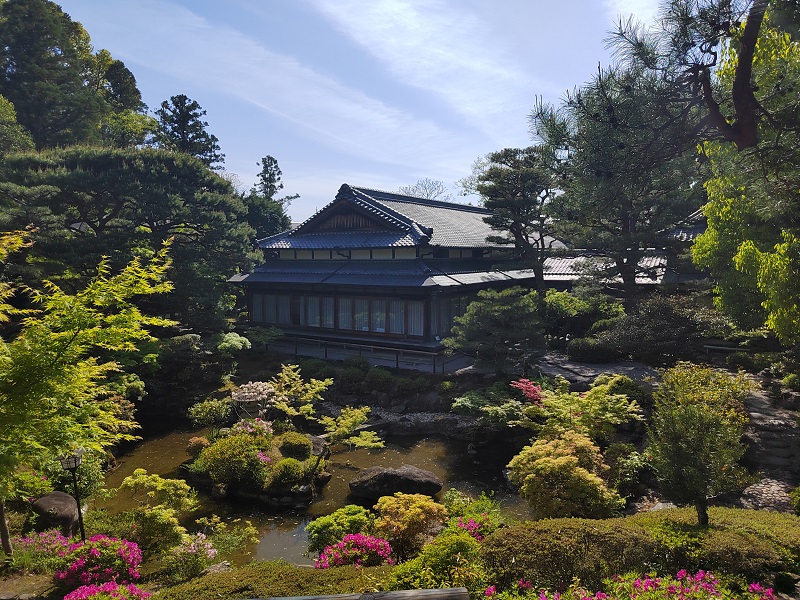
Photo by Japanforeveryone.com
Practical information
| View location on Google Maps | |
| 9:00-17:00 Last entry 30 minutes before closing time |
|
| 24-28 February | |
| Free | |
| The garden is located southwest of Todaiji Temple 15 minutes’ walk east of Kintetsu Nara Station 25 minutes’ walk east of JR Nara Station |
Mount Wakakusa in Nara is a majestic mountain offering a panoramic view of the city and its historical treasures. During the winter, the mountain is popular for the Yamayaki Festival, during which its vegetation is burnt in a spectacular ceremony. This unique event attracts visitors from all over the world. During the rest of the year, Mount Wakakusa is a great place for hiking or simply enjoying the natural surroundings. It is an enchanting place that offers a refreshing break from the hustle and bustle of the city, providing a feeling of serenity and peace.
Tourists are only allowed to climb Mount Wakakusa in spring and autumn to protect the native grasses that grow on the mountain.
Emerson83, Public domain, via Wikimedia Commons
Practical information
| View location on Google Maps | |
| 9:00-17:00 | |
| Mid-December to end of March | |
| 150 Yen | |
| The entrance to Mount Wakakusayama is located in the eastern part of Nara Park 35 minutes’ walk east of Kintetsu Nara Station 50 minutes’ walk east of JR Nara Station |
Naramachi in Nara is a picturesque district that retains the traditional atmosphere of the ancient city. With its narrow streets and traditional wooden houses, it feels like stepping back in time. Antique shops, small restaurants, cafés and art galleries can be found here. Historic buildings such as an 18th century merchant’s house are open to the public, allowing visitors to discover the daily life of the time. Naramachi is a lovely place to stroll around, immersing yourself in the charm of historical Japan and enjoying the unique atmosphere of this charming district.
663highland, CC BY-SA 3.0, via Wikimedia Commons
Practical information
| View location on Google Maps | |
| 15 minutes’ walk south-east of Kintetsu Nara Station 20 minutes’ walk east of JR Nara Station |









